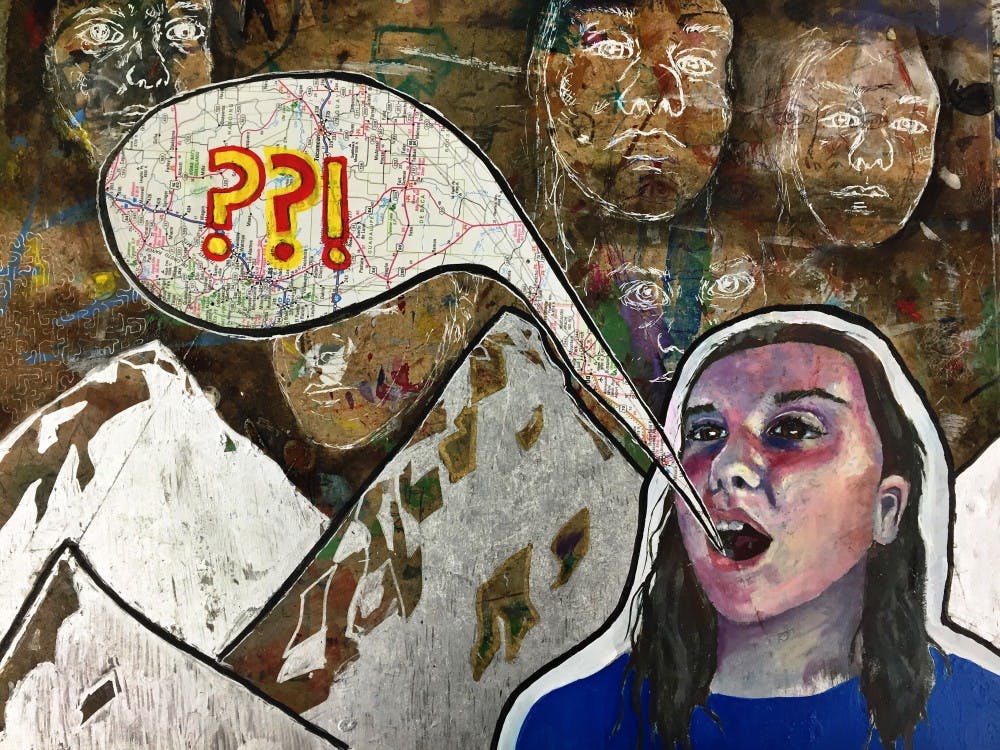An all–expense–paid trip to anywhere in the world, from Paris to Beijing, is one of the lesser known perks of which fine arts and design students can take advantage. While a room at the Marriott and free international airfare sounds like a fairly cushy life for a college student, like most things at Penn, it remains elusive. This semester one such course is being offered: "Tiananmen Square: A Case Study For Fine Arts and Landscape Architecture."
The brainchild of Professor Ken Lum, the course focuses on the design and history of Beijing’s Tiananmen Square. “The course is officially titled 'Reimagining Tiananmen Square', which is an impossible project because Tiananmen Square is obviously a highly political space,” says Lum. He’s referencing the protests of 1989 and China’s complex history dating back to the 14th century. Nevertheless, Lum has conceived of a way to approach the impossible.
“It’s a class that involves systems of representation, understanding politics of the site, historical reconstruction, and issues relating to urban planning/urban studies,” he says.
Students will demonstrate that they understand these concepts by presenting a final project detailing the changes they will make to the square, such as removing monuments or incorporating public art, to a panel of jurors.
"We've received enormous demand for the course. I turned away quite a few students,” says Lum. Within 24 hours of the course being posted on Penn Design's webpage, more than enough students to fill the class had inquired about the course.
But fast action did not ensure students a space. Professor Lum says, “If they said, ‘Oh I’ve never been there before, I’d like to go’, they might not get in. They have to say I’m interested in these sorts of issues, show me something, makes some effort in terms of it, and then they get in.”
Weiji Wang (C ‘19), who took a travel–based course in the fall semester to Vancouver—"The Chinese Body and Spatial Consumption in Chinatown"—attributes much of the demand to Professor Lum’s leadership. “I’ve also heard that Ken is a really good professor. He’s a really renowned artist,” she says.
But it was also content that drew her to the course. As a student from China, Weiji felt disconnected from her culture as she studied in the US. Because the course included mainly students of Chinese ethnicity, the class was a welcoming space where she could speak Chinese and connect with undergrads and grads alike.
Nevertheless, these opportunities largely fly under the radar, spread by word of mouth, or disseminated by the Penn Design website. “The case is that most people don’t even know about these courses,” says Natasha Cheung (C ‘20), who has been enrolled in two fine arts courses that incorporate travel this year. “And people who do take fine arts classes,” she says, “I feel like are looking for an intro design class or an intro drawing class.”
Expanding your range beyond intro classes and the traditional track of fine arts and design is key, then, to finding courses that provide non–traditional, off–campus opportunities. When Natasha enrolled in her first course that involved travel, "The Chinese Body and Spatial Consumption in Chinatown," she says, “I didn’t even know that we were traveling.”
It is even more difficult to find arts courses that travel because many are one–offs, which means they will not be held again due to funding. Each course, then, is entirely unique, with an original syllabus and lectures. In the past, courses have travelled to Jamaica, Paris, and Cuba, among others.
Any student interested in art or design at Penn potentially has access to these courses. To find them, all you have to is be open–minded and interested. And act quick.

